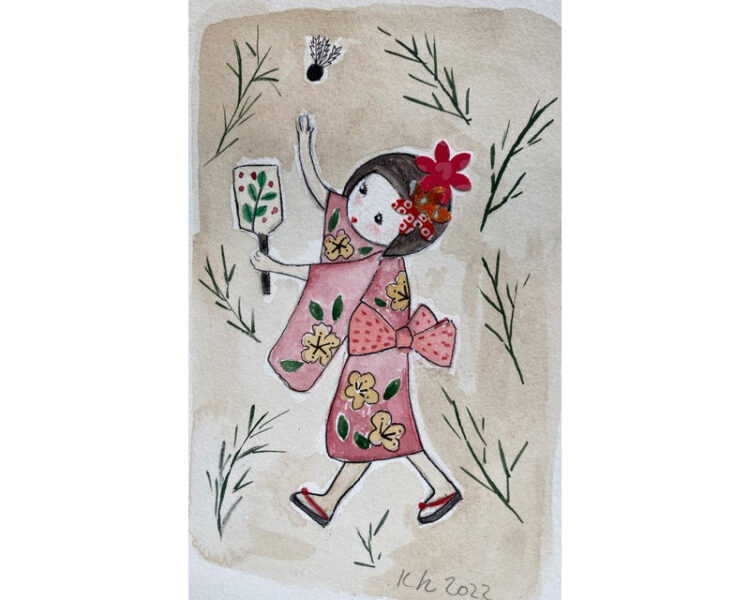By Keiko Kay Hirai For The North American Post
For those who may not be familiar with this annual tradition, the New Year in Japan is called “Oshogatsu” and is celebrated for three days – from January 1st to January 3rd. The childhood memories I have of the days leading up to Oshogatsu while growing up in Kyushu, Japan are very special to me and always stream through my mind during this time of year.
When I arrived in America at the age of eleven, I saw how people in America celebrated the New Year. It was so different than in Japan and was a real culture shock. Attending lively New Year’s Eve parties and then waking up late the next day to watch football games on TV while snacking all day on party foods was so completely foreign to me.
As I have gotten older, I cherish those childhood memories in Japan even more. The tradition I enjoyed most was the one where I took steps to start anew with a fresh mindset. It’s such a great feeling to get plenty of sleep the night before and rise early on New Year’s Day, refreshed and ready to face the coming year.
On the first day in December, for example, Mother would always say, “Keiko, Oshogatsu is coming and will soon be here! Let’s get busy and do our preparations so that we can welcome in the New Year with a clear mind.”
“What do you want me to do Mother?” I asked.
“Keiko, we are going to go into each room in our house and clean every part of it, high and low. Here’s a checklist, so be a good girl and do your part.”
Without arguing, I would jump right in and help Mother clean all the shoji screens, declutter the drawers in every room, and scrub any marks off the walls. But that was only the beginning. My mother’s entire “to-do” list for me would read something like this:
Do you owe anybody money? Pay it back.
Did you say any mean words to your friends? Apologize to them.
Did you intend to do a kind act for someone but forget to do it? If so, do it now.
Do you have any unfinished homework or projects? Complete them.
Have you listed the things you will be doing in the coming year to become a better person? Write them all down.
After I completed my list, it was time to relax and wait for the New Year to arrive. The celebration actually began on the evening of December 31st. Mother and I would sit in our clean house and enjoy eating the traditional bowl of buckwheat noodles topped with grated yamaimo (mountain potatoes). As the hot and slippery noodles and broth went down our throats, we would listen to the faraway sounds of the temple bells on the radio, counting each distinct ring, one after another, as the total number represented the year we were about to enter.
Mother would always remind me, “Keiko, soba noodles are the last food to enter your stomach this year. These noodles are made of buckwheat and are meant to purify your body and your soul. If you want to start out the New Year with a cleansed body and a clear soul, don’t leave a single drop of broth in your bowl!”
When New Year’s Day final arrived, I loved getting up early because Mother dressed me in a colorful kimono. Afterwards, we visited the nearby temple and prayed for a year that would bring meaningful relationships, good health, and much prosperity. After that, we went home and enjoyed eating the traditional New Year’s meal called “Osechi Ryori.” I remember my favorite foods among the dishes that were laid out before me were the ozoni (clear broth with mochi rice cakes) and kazunoko (herring eggs).
After filling my stomach with this delicious food, I went outside and played the hako-ita (hanetsuki) game with my neighborhood friends. Each of us had a brightly decorated wood board with a handle and batted an ornament made of feathers around to each other for what seemed like hours. When we were done playing, I would invite my friends to our house and play the “Hyakunin Isshu” karuta card game (One Hundred Poems by One Hundred Poets) while sitting on top of the heated kotatsu (wooden table with a heater underneath) to keep us warm. My favorite part was always when Mother would serve sweet mikans (mandarin oranges) and senbei (rice crackers) for my friends to enjoy.
As an adult at the end of each year, I take these traditions seriously and try my best to follow the exact list that my mother and I worked on together. This year, why not try to make a similar list for yourself? When you are done, I know that you will feel so much better because you will approach the New Year filled with clarity, a sense of purpose, and genuine optimism.
I hope that I have provided some information that provides a new or different perspective by explaining how holidays are celebrated in Japan. I learn something new every day, so I’d love to hear your comments on my columns. I look forward to us learning from each other.
Editor’s note. The NAP reviewed the Hyakunin Isshu in three articles in Feb. 2021 (napost.com).







